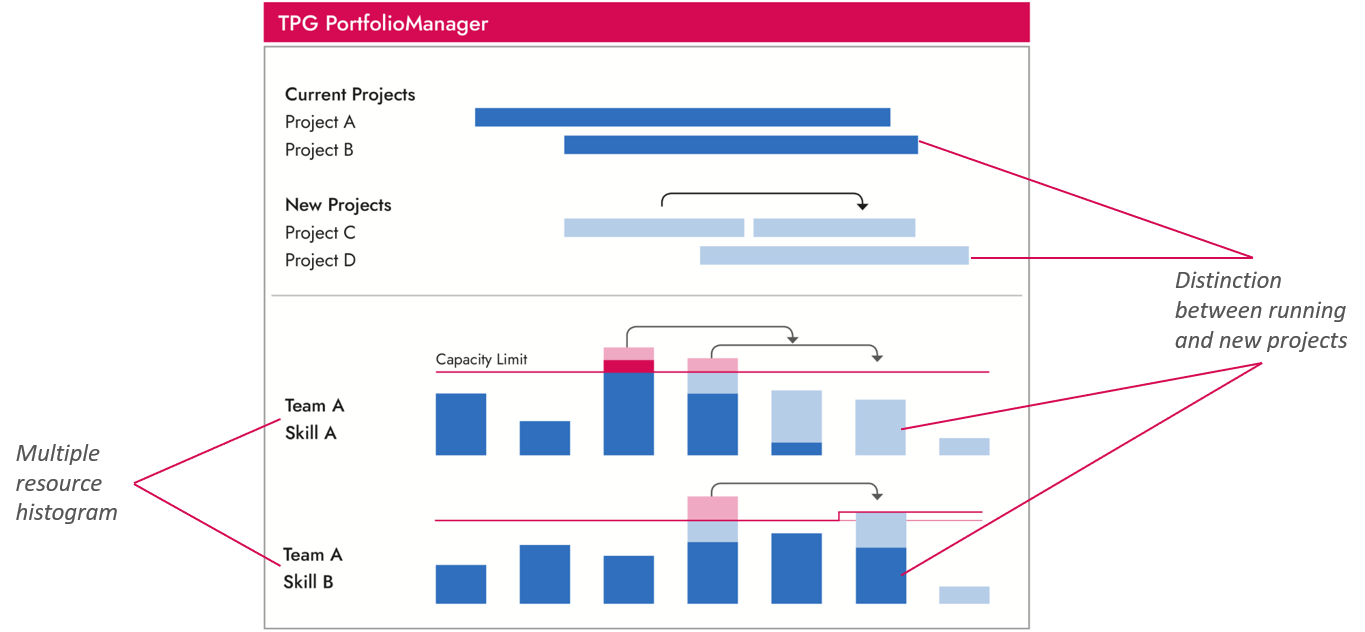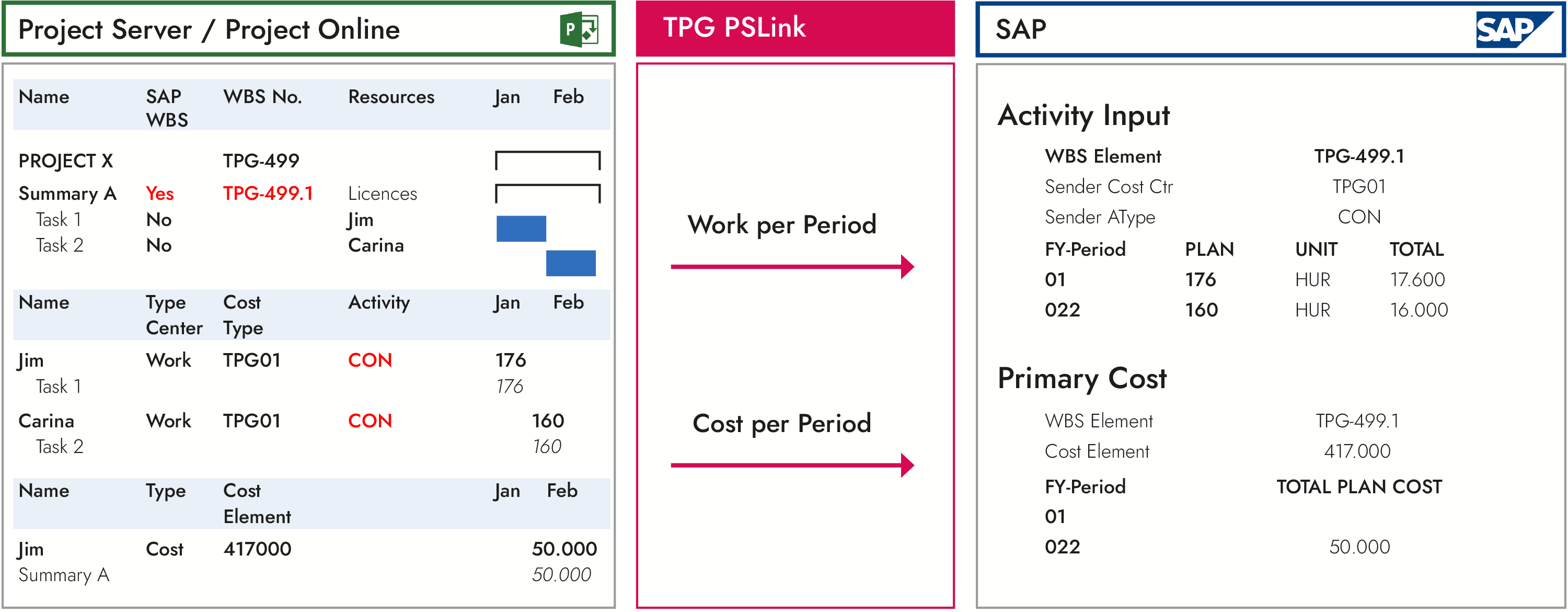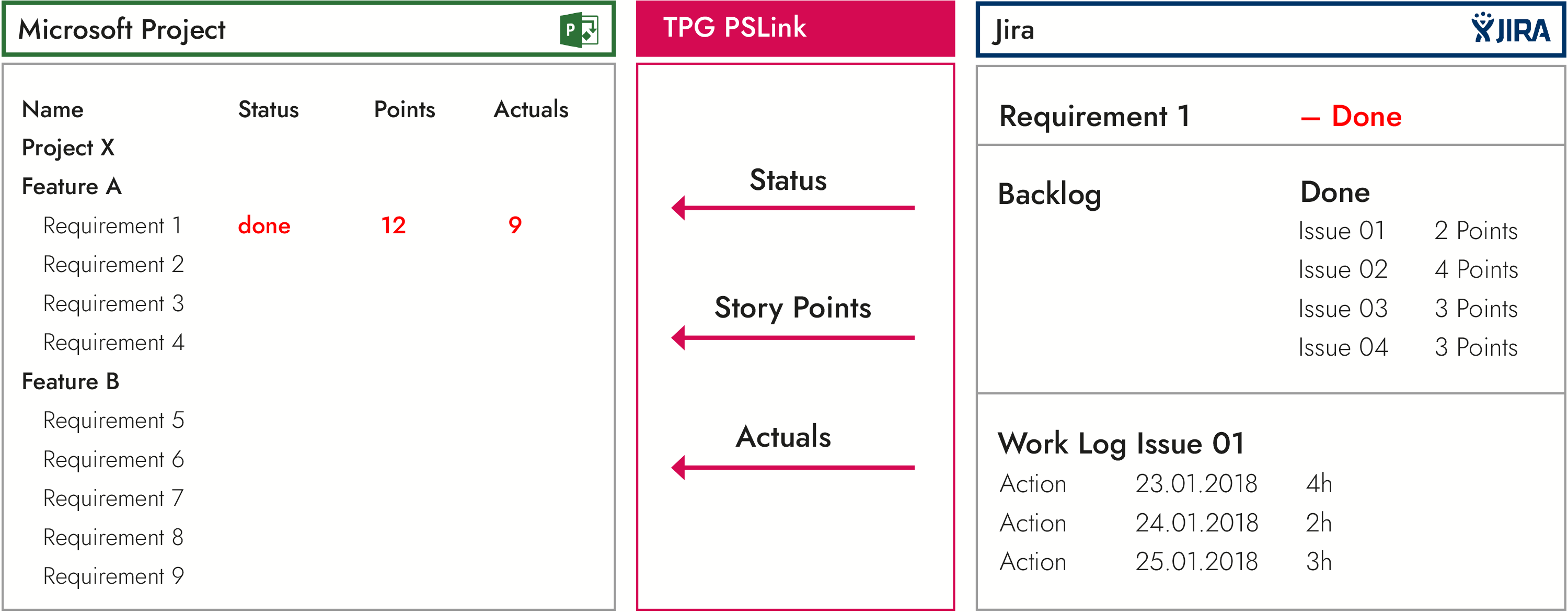As an IT department head or project manager, you know that internal IT projects have unique traits that differ from projects involving other departments. One of the core requirements of an IT department is that it remains operational at all times.
After looking into what makes internal IT projects so particular and providing some general tips, this article will cover the following points:
- 4 Solutions for greater success
1) IT project portfolio management
2) Integrated cost allocation
3) Comprehensive team planning
4) Work planning for individuals - Conclusion and recommendations
Projects involving changes to the IT landscape are generally handled by employees who do this concurrently to their normal everyday work.

Other unique aspects affecting IT team leaders and their employees:
The IT environment is very dynamic with carefully timed processes at very brief intervals.
- New skills are often required on short notice.
- The portfolio tends to include a greater number of small projects and just a few larger ones.
- A clear distinction between operations and projects is often lacking.
- IT tasks are increasingly being managed using agile methods, and this has a major impact on project management.
- The IT department exists to serve others, which is why its costs are almost entirely charged to the departments it serves.
- IT employees normally use a task-oriented planning tool or ticket system. For maximum efficiency, this tool or system should be integrated with the project management tool.
Before discussing possible solutions, however, we would like to share two important tips:
Define Clear Criteria for Your Projects
In many IT departments, the belief prevails that many assignments – even larger ones – can be handled in addition to the regular daily operations. In doing so, there is the danger that these assignments will miss their deadlines – or will not get done at all.
Find out how agile methods can help reduce resource conflicts in projects in this article.
So, it is important to have a clear understanding among all the participants as to whether this assignment is an operation or in reality a project with all its related processes.
Our tip: Conduct a project-worthiness analysis to determine under what conditions an IT proposal should be handled as a project and define the types of projects.
Doing this increases your chances of success because the assignments will no longer be handled “on the fly.” Classifying something as a project has its advantages: the objectives and roadmap are clearly defined, the necessary resources are allocated, and decisions are made.
Keep Everyone in Sync
Agile methodology is very popular in the IT industry. Unlike normal project planning, agile projects involve processes of differing lengths. Resource management is more complicated due to the different durations of the processes. We therefore recommend that you try the following.
Our tip: Try to subdivide your IT project processes into work packages that can be performed according to a fixed schedule of phases.
Allocating a consistent set of resources to each project phase helps ensure that team members are able to seamlessly switch between project work and their normal duties. Doing this will significantly reduce the amount of effort needed to coordinate all the resources.

You might also like: Comparing PM Methods – Agile, Traditional or Hybrid?
4 Solutions for Greater Success
In the following sections, we present solutions for four areas especially critical for heads of IT. These are IT project portfolio management, internal cost allocation, comprehensive team planning and, finally, personalized task planning.
1) IT Project Portfolio Management
Project portfolio management is particularly important for IT. It is not unusual for several hundreds of projects to be handled in one year. This requires a clear strategy, and the projects must be prioritized accordingly.
Benefit: The most important criteria for project portfolio management are:
- Priorities: you ensure that you focus your efforts primarily on the right – and most important – projects.
- Complete overview: you stay informed on all planned and current projects.
- Available resources: you can identify any resources available for initiating and performing additional work on any new projects.
- Strategic foresight: you can anticipate what expertise and / or skills will be lacking or insufficiently present in your company and can proactively work to develop these.
- Early warning system: you can detect budget and / or resource bottlenecks in a timely manner and can adapt your corporate strategy accordingly.
Goal: Ensure that you receive a prioritized list of the projects and that most of the resources are allocated to the key projects. There are various approaches and tools for handling this. Please also consult the article outlining 7 steps to project portfolio management.
One solution approach: One way to integrate new projects into a portfolio with regard to resource planning is depicted in the following diagram.
In this Microsoft-based solution, the bars used to represent the various projects can be shifted on the timeline. The histogram depicting each department’s resources shows the available capacities and whether the necessary resources are available to handle this project in the specified time frame or if the project should be postponed or the available capacities adjusted.

Find out how the internal IT of a large Swiss healthcare facility solved their PM system challenges with TPG’s new and advanced ProjectPowerPack (Case Study).
2) Integrated Cost Allocation
The actual cost of the IT services should be documented accurately and be allocated (as far as possible) to the departments benefiting from these services. Many smaller companies often have no idea how much these internal IT services actually cost. Yet, larger companies are generally aware of the actual costs.
Benefit: Integrating the project management and ERP systems has its advantages, such as:
- Alignment of the PM and ERP system architectures
- Support for planning and monitoring the IT budget
- Allocation of services to the various cost centers
- Avoidance of dual data entry
- Timely availability of data, thereby enabling better control of the IT projects
- Higher quality data
Goal: Ensure that your key systems are integrated so that as many processes as possible can be automated.
Solution approach: Important use cases involving the integration of PPM and ERP systems plus other systems in the IT landscape are:
- Adding selected projects to an ERP system (such as SAP) from e.g. a SharePoint list and the resulting creation of a project structure in the PPM system (such as Microsoft Project) using a template appropriate for that type of project
- Transferring the PPM system’s project structure to the ERP system
- Transferring the PPM system’s tasks and costs to the ERP system
- Transferring the current work by cost center and type of service from the PPM system to the ERP system for further internal invoicing
- Transferring the actual costs from the ERP system to the PPM system for reporting to the project manager

Our tip: Use short interval processes to track the IT services. Ensure that this work is charged to the right cost centers.
The volume of projects has a significant effect on the data quality. Projects exceeding a certain size therefore require a PMO to coordinate the efforts and maintain an overview to ensure the project’s success.
3) Comprehensive Team Planning
For IT in particular, handling the many operations associated with daily operations while simultaneously managing projects involving the same staff is a major challenge. This is only possible if the entire team is working at full capacity. PPM tools are unsuitable for operational planning, and Excel is only minimally suited.
Benefit: The advantages of comprehensive team planning are:
- A clear overview of resource utilization in the team
- The project manager and team leader have a basis for the coordination efforts.
- Team leaders have the data they need to explain resource utilization in the team to their supervisors and can explain the status of each team member: who works when, on what and for how many hours; who has the capacity to take on new tasks and who needs to be relieved of some tasks.
Goal: Provide your team leaders with the tools necessary for precise planning, which will allow them to say with certainty whether or not their team can contribute any resources when asked by their project manager. The document “3 Important Points for Tactical Resource Planning” linked below provides more information on this.
Special Download: 3 Important Points for your Tactical Resource Planning (PDF file)
Please fill in the form.
* Required Fields | Data Protection
Solution approach: To ensure that you achieve complete planning in the matrix organization, please note the following:
- The planning is only complete if there are no gaps, so make sure you include all absences, operations and project work for every team member.
- Only team leaders can handle this because project managers do not have the necessary insight.
- The availability of a resource to work on the project can be calculated by subtracting any absences and operations from the person’s overall capacity.
- Project managers and team leaders each need their own planning status. Depending on permissions, each should be able to view the other’s planning status but not to alter it. This allows each role to work separately from a technical perspective.
- The best strategy is to implement a centralized, database-supported tool that enables project managers and team leaders to work efficiently.

4) Work Planning for Individuals
Have you ever considered involving the employees in planning an IT project? After all, they are the ones who will be doing the work to implement the work packages. Project managers are often unable to correctly estimate the time needed to complete a particular task because they are not familiar with the work of these IT specialists.
Benefit: Allowing the employees to participate in work planning has several advantages:
- The project manager defines the project’s structure with its work packages, and then the team handling the work plans the individual tasks in these work packages using a tool suitable for them.
- The result is not some rough estimate but rather a realistic plan for the project.
- This frees up the project manager’s schedule because the details are defined in the task lists of the individual work packages.
Goal: The employees use various tools during the IT project. The goal for individual work planning must be to integrate these systems. Ideally, each individual should work with only ONE tool.
You can achieve this by integrating the employee’s work management tools (such as Jira) with the project manager’s PPM tool (such as Microsoft Project and SharePoint). Learn more in the article about integrating PPM with Jira.
Solution approach: Possible use cases for the integration of Microsoft Project and SharePoint with work planning (in this case Jira) are:
- Synchronize the Microsoft Project structures with Jira
- Enter the issues and estimates into Jira
- Import the standard issues from SharePoint into Jira
- Synchronize Jira and Microsoft Project to input the progress from Jira

Conclusion and Recommendations – Tips for Greater Success in Internal IT Projects
Internal IT projects have unique attributes that make them different from projects in other departments. This article has explained some of the differences.
We have also provided possible solutions to help you master project portfolio management, internal cost allocation, comprehensive team planning and personalized task planning.
Our final tips
Get to know the individually adaptable “PPM Paradise” – the optimal environment for your enterprise-wide project, program, portfolio and resource management. Download the eBook now (just click, no form).
And sign up for our bi-weekly blog newsletter to make sure you receive all our updates.
Did you enjoy this article, and do you have any feedback for us regarding the management of internal IT projects? We look forward to your comments.
Subscribe to TPG BlogInfo: Never miss new practice-oriented tips & tricks
Every other week: Receive practical tips in TPG blog posts written by recognized experts in project, portfolio, and resource management.
* Required Fields | Data Protection
 Johann Strasser
Johann Strasser
Managing Partner at TPG
The certified engineer, has been a managing partner at TPG The Project Group since 2001. After many years as a development engineer in the automotive and energy sectors, Johann Strasser spent a decade as an independent trainer and consultant in the field of project management. During his tenure, he also served as project manager for software projects in the construction industry and provided scheduling and cost management support for large-scale construction projects. At TPG, he applies his expertise in product development and consulting services for international clients. His special focus is on PMO, project portfolios, hybrid project management, and resource management. For many years now, he has shared his knowledge through presentations, seminars, articles, and webinars.
 Achim Schmidt-Sibeth
Achim Schmidt-Sibeth
Senior Marketing Manager
After earning his engineering degree in environmental technology, he gained many years of experience in project management through his work at an engineering office, an equipment manufacturer, and a multimedia agency. Achim Schmidt-Sibeth and his team have been responsible for marketing and communication at TPG The Project Group for many years now.








